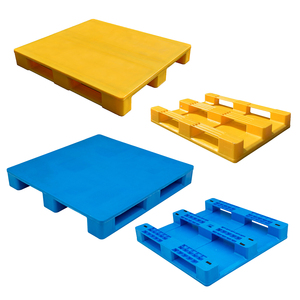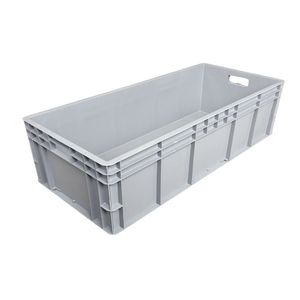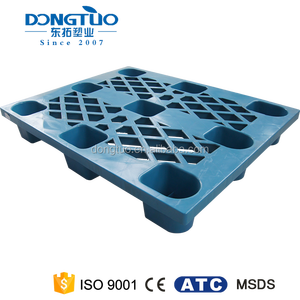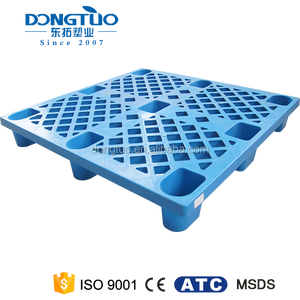
All categories
Featured selections
Trade Assurance
Buyer Central
Help Center
Get the app
Become a supplier

(11577 products available)














































Warehouse trays come in different types and varieties. Below are some common types of warehouse trays.
These trays are made of hardwearing plastics such as polyethylene and polypropylene. However, lightweight and rugged plastic trays are used for storage, handling, and transportation of products that require protection against rust, moisture, and corrosion. They are sometimes offered in an open style with vents or covers.
Metal trays are mostly constructed with steel, aluminum, or even galvanized wire, giving strength and exceptional durability for heavy contents. There are some types of metal trays that are intended for high temperature and high moisture environment with resistant coatings. They are utilized for stacking or shelving for stable storage of heavy goods.
These trays are fabricated using steel wire and offer open space for airflow throughout the stored equipment. The wire mesh is made strong and resistant to rust. They are commonly used for storage of small components that require ventilation within the storage area, such as chemical products or tools.
These are plastic trays that enable simple and efficient stacking. They come in a design that allows stacking one over the other to maximize storage space effectively. Stackable trays are usually found in warehouses that need extra space or in dumping where movement is required.
These trays are meant for automated guided vehicles (AGVs) in warehouses with automation systems. AGV trays are designed and fitted to the vehicles for transporting goods around the warehouse. AGV trays are compatible with automated processing for efficiency in inventory management or order fulfillment.
These are durable and meant to be reused several times. Returnable trays are made of rigid material such as plastic and metal for cycling purposes within supply chains. These trays minimize waste generated by one-time use containers only, such as totes, and are given back by customers after the products have been delivered.
Warehouse tray maintenance may not be similar for all tray types; however, below are some key maintenance practices that can be performed regardless of the tray type.
Warehouse trays are flexible and can be used in different situations and for different purposes. Below are a few common applications of warehouse trays.
Wire mesh trays are ideal for holding small mechanical components within a manufacturing facility. Moreover, they keep the parts ventilated, making them suitable for storage of items such as tools, fasteners, and electronic equipment. Wire trays are made to be rugged and durable while supporting heavy loads and facilitating easy identification and retrieval of stored items.
In the contemporary automation used in warehousing, trays serve as an essential element for automated guided vehicles (AGVs). The AGV trays move products around the warehouse with efficiency and speed, contributing to labor cost cut and higher productivity. Moreover, AGV trays come in assorted sizes and designs, which make them ideal for transporting various items, from bulky packages to smaller components.
Plastic trays are widely utilized in the food and beverage sector for transportation and storage of perishable and packaged products. They are easy to sanitize, lightweight, and highly resistant to chemicals; hence, they are ideal for moving fruits, cans, and bottled drinks. Ventilation trays also aid in airflow around food products to maintain freshness.
In distribution centers, returnable packaging trays are used during the movement of goods from one location to another. These trays are durable, cost-effective, and environmentally friendly; hence, they are useful in carrying products such as electronics, machinery components, and consumer products, talking about efficiency and safety and reducing one-time use container costs.
Wire mesh and metal trays find common usage in the medical field for storage of surgical instruments, laboratory supplies, and diagnostic equipment. They are sturdy, easy to sterilize, and permit airflow; thus, they help keep items organized and hygienic and readily available for use in the medical facility. Ventilation can be used to prevent mildew and rust on metal trays.
In assembly line settings, stackable plastic trays are used to keep parts and materials organized. They are designed to fit onto shelves or within workstations and facilitate easy access to items that are needed in various production stages. Their stackability enables efficient use of vertical space, as many of these trays can be housed in one given space.
Quality and security are extremely important in warehouse trays because they directly affect warehousing, object storing, and transportation productivity. Below is a discussion on some of the essential factors that concern quality and safety warehouse trays.
Warehouse trays are made of diverse materials, each with its features. Most plastic trays are made from polyethylene or polypropylene, which give them strength and flexibility. Galvanized or powder-coated wire trays are meant to resist corrosion, and metal trays are constructed from steel or aluminum for strength and durability. Material choice affects the tray's resistance to moisture, heat, and chemicals, which, therefore, means the quality of the materials determines the kind of effect the surrounding environment will have on the products stored in them.
Every tray's design comes with a certain load capacity to avoid structural failure or collapse. Stacking or overloading a tray beyond its rated capacity might pose safety and security hazards, such as damaging the product in transit or storage or even causing an accident. A well-made warehouse tray must be capable of accommodating intended weight loads without giving way and must be designed to bear the weight that it carries.
The surface design of a warehouse tray can help avoid accidents and improve storage productivity. Trays with an open design like the wire mesh allow airflow to the product for ventilation purposes. However, trays designed with solid surfaces are produced to keep small items like the tools from falling off. Some surface types include textures, which improve friction and may reduce the chances of items slipping off tray edges.
Reusable trays, such as returnable packaging trays and stackable plastic trays, are produced with positive eco-friendly practices. By using a reusable tray, the waste that is produced by discarding single use containers like cardboard or plastic will be reduced. The majority of Warehouse trays are made of hard-wearing materials such as metals and plastics, so they mostly come in handy on repeated usage. Trays that require recycling are manufactured for eco-friendly recycling practices.
Apart from sturdiness, some common safety features are added to warehouse trays. Many plastic trays come with rounded edges to avoid injuries when handling them. Metal trays sometimes have brackets or guards installed to enhance the security of the products stacked on the tray. Moreover, trays used in the automation process have sensors and actuators applied for smooth operations and to minimize the chances of accidents.
Answer: Material, size, load capacity, and purpose of use must be considered while choosing warehouse trays. The kind of environment it's going to be used in, whether it is for automation or manual operations, plays an important role in determining which tray to select.
Answer: Regular warehouse trays are meant for manual handling, whereas AGV trays play the role of a key component in the automated warehouse systems where goods are transported by robots. AGV trays have special automated production processes to increase the efficiency and accuracy of an automated warehouse.
Answer: The lifespan of warehouse trays depends on the material they are constructed with and how frequently they are used. Eco-friendly plastic and metal trays have a tendency of lasting many years when used properly and maintained well.
Answer: Stackable trays are designed to enable easy stacking, thus enabling the trays to occupy less floor space as they use more vertical space. They help create additional storage space and increase efficiency in warehouse storage systems.
Answer: Yes, many warehouse trays, especially constructed from strong plastic or metal, are reusable. After completing their use in warehouse activities, most trays can also be recycled, contributing toward environmental sustainability.